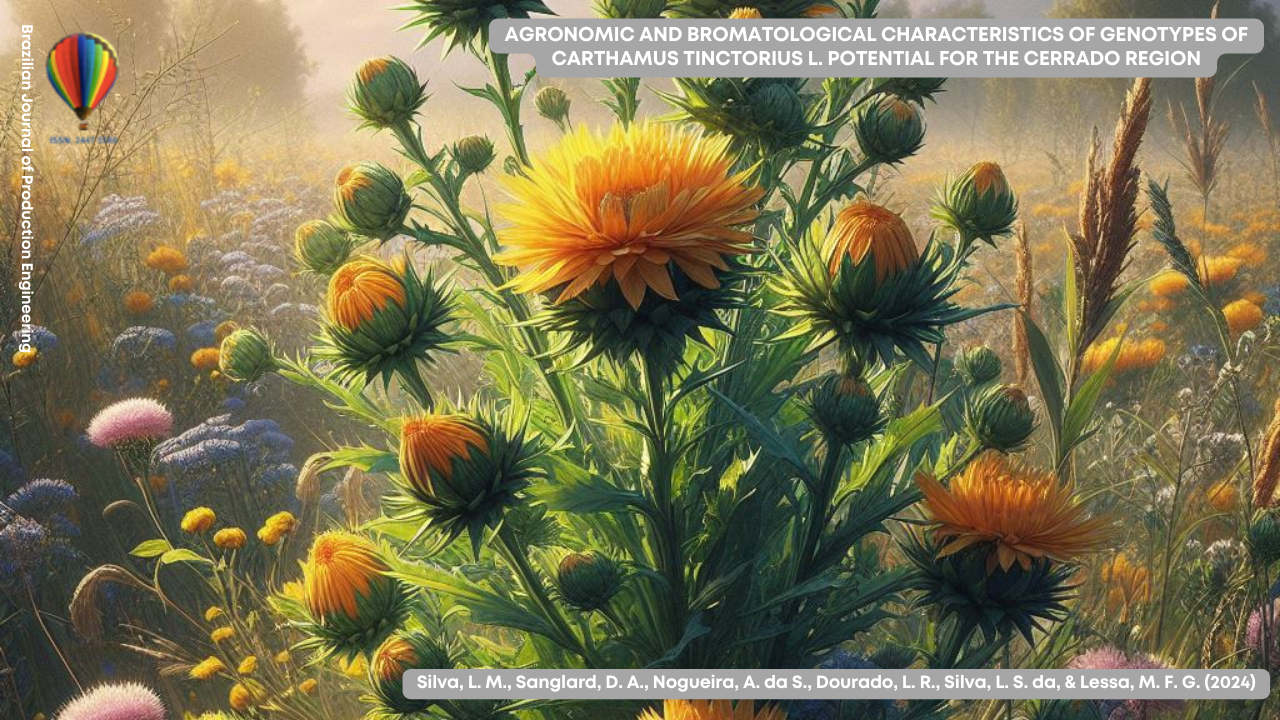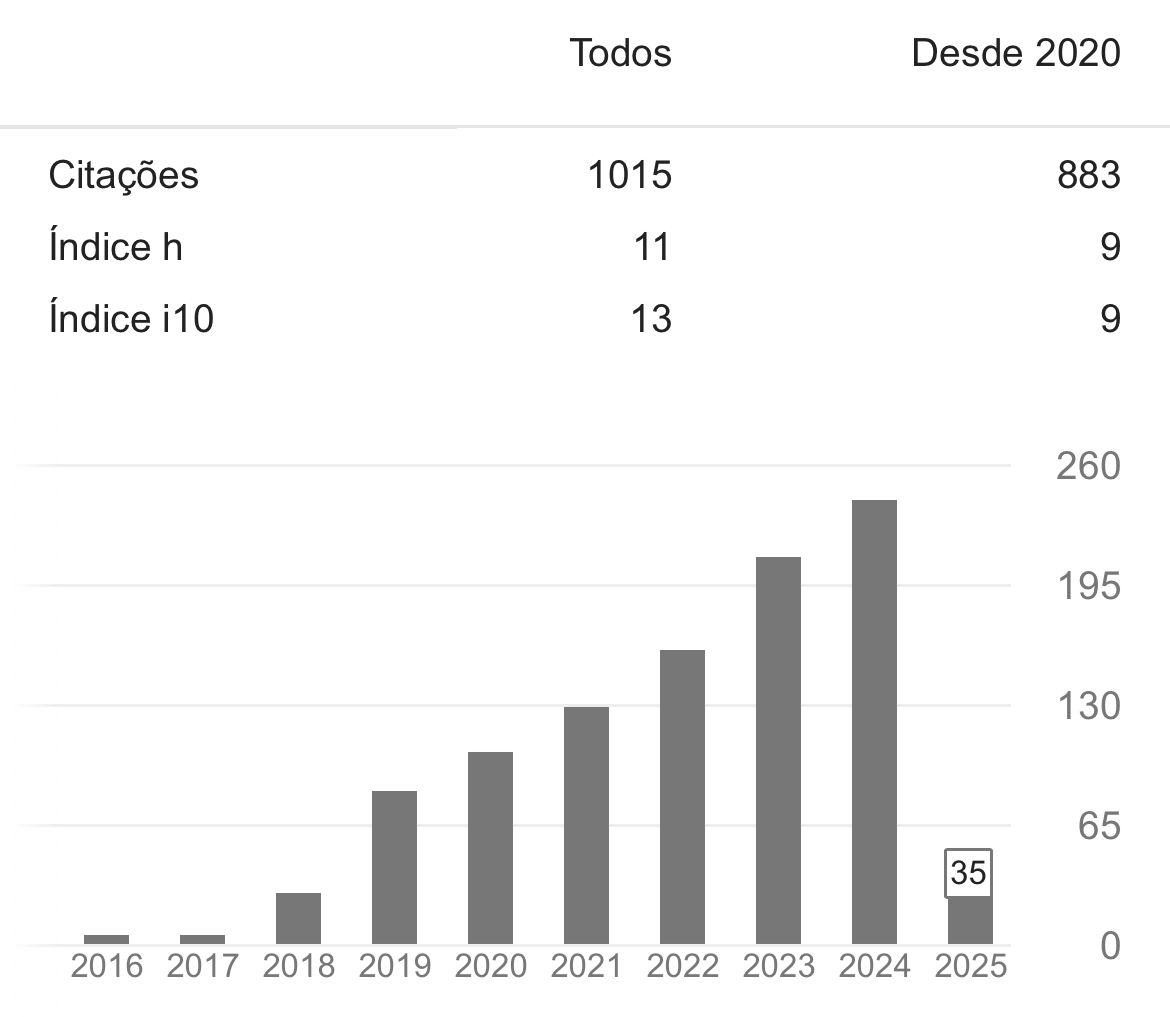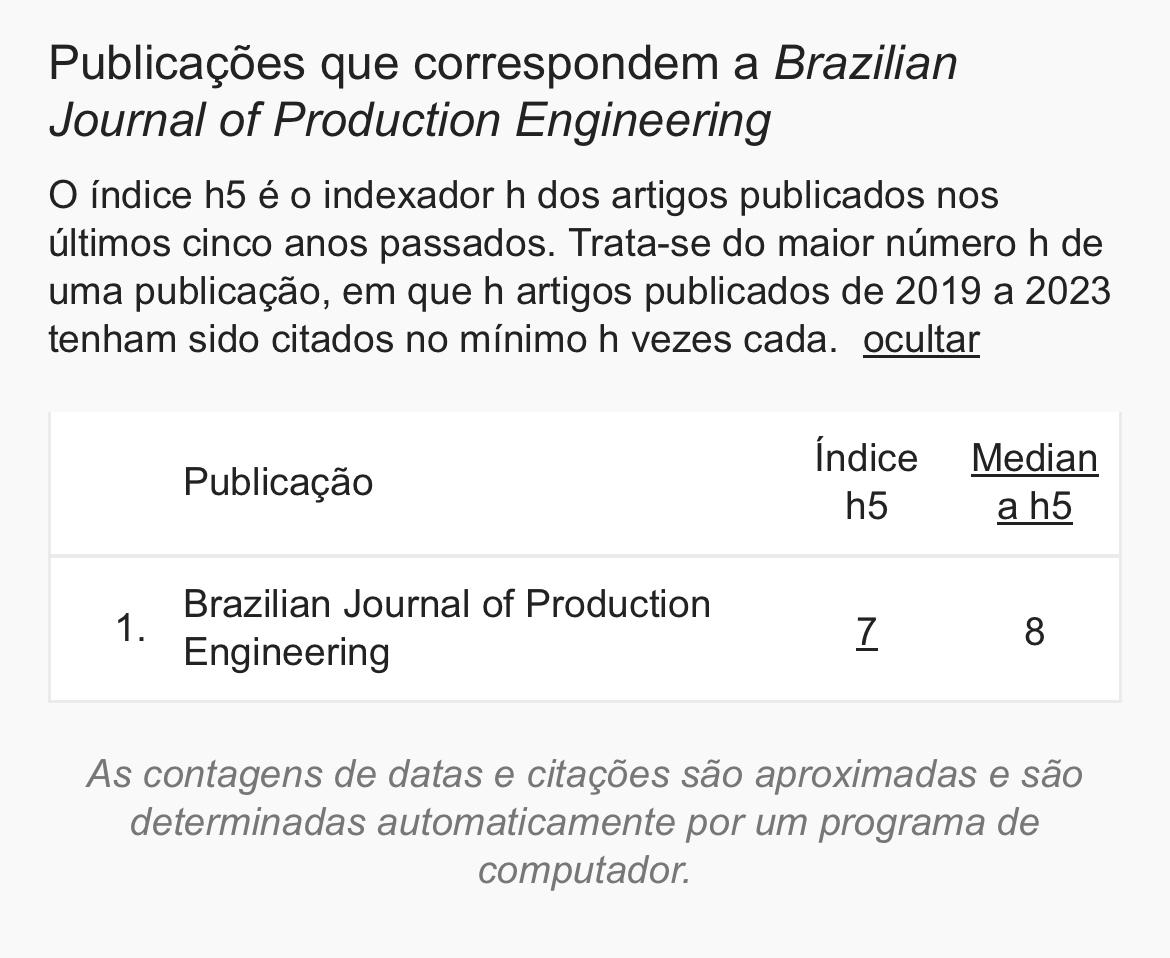Agronomic and bromatological characteristics of genotypes of Carthamus tinctorius l. Potential for the cerrado region
DOI:
https://doi.org/10.47456/bjpe.v10i2.44380Palavras-chave:
Cártamo, Melhoramento Vegetal, Extrato Etéreo, Proteína BrutaResumo
Safflower (Carthamus tinctorius L.) can be an alternative crop in the off-season in Cerrado regions because it has high productivity with low demand for water during its cycle, in addition to being a fully mechanized crop. It is currently cultivated mainly for the production of edible oil, cooking oil and for pharmaceutical applications. In view of this, the present work aims to evaluate the agronomic performance and the bromatological and morphological characteristics of 19 safflower genotypes in the semiarid north of Minas Gerais. The work was carried out at the Institute of Agricultural Sciences of the Federal University of Minas Gerais (ICA/UFMG). The design used was completely randomized with 19 treatments (where each genotype was considered as a treatment) with 16 replications. Morphological characteristics, crude protein and ether extract contents were evaluated. The data obtained were submitted to analysis of variance and the averages were grouped by the Skott-knott test and multivariate analysis (P<0.05). The evaluated genotypes showed protein contents varying between 18.65% and 26.69%. The ether extract contents of the grains of the evaluated genotypes ranged from 18.54% (genotype 63) to 24.98% (genotype 119). Genotypes 73, 77 and 63 have superiority in their morphological and bromatological characteristics, thus allowing further research to be carried out in order to obtain genetic material with great potential for the Brazilian semi-arid region.
Downloads
Referências
Abud, H. F., Gonçalves, N. R., Reis, R. D. G. E., Gallão, M. I., & Innecco, R. (2010). Morfologia de sementes e plântulas de cártamos. Revista Ciência Agronômica, 41, 259-265. https://doi.org/10.1590/S1806-66902010000200013 DOI: https://doi.org/10.1590/S1806-66902010000200013
Alvares, C. A., Stape, J. L., Sentelhas, P. C., Gonçalves, J. D. M., & Sparovek, G. (2013). Köppen’s climate classification map for Brazil. Meteorologische zeitschrift, 22(6), 711-728. https://doi.org/10.1127/0941-2948/2013/0507 DOI: https://doi.org/10.1127/0941-2948/2013/0507
Alves, J. L. R., Goes, R. H. D. T., Martinez, A. C., Nakamura, A. Y., Gandra, J. R., & Souza, L. C. F. D. (2018). Ruminal parameters and ruminal degradability of feedlot sheep fed safflower grains. Revista Brasileira de Saúde e Produção Animal, 19, 324-335. https://doi.org/10.1590/S1519-99402018000300009 DOI: https://doi.org/10.1590/s1519-99402018000300009
American Oil Chemists’ Society. Official methods and recommended practices of the American Oil Chemists’ Society. 4th ed. Champaign, USA, A.O.C.S., 2004.
Chaves, R., N., Ramos, S. M. B., Pego, M. F. F., Sanglard, D. A. (2020). Avaliação de acessos de cártamo adaptáveis às condições de déficit hídrico e seu potencial para programas de melhoramento. Acta Iguazu, 9(1), 137-149. https://doi.org/10.48075/actaiguaz.v9i1.22797 DOI: https://doi.org/10.48075/actaiguaz.v9i1.22797
Ebrahimian, A. & Soleymani, A. (2013). Response of yield components, seed and oil yields of safflower to nitrogen, phosphorus and potassium fertilizers. International Journal of Agronomy and Plant Production, 4(5),1029-1032. Retrieved of https://www.cabdirect.org/cabdirect/FullTextPDF/2013/20133173154.pdf
Galant, N. B., Santos, R. F., & de Almeida Silva, M. (2015). Melhoramento de cártamo (Carthamus tinctorius L.). Acta Iguazu, 4(1), 14-25. https://doi.org/10.48075/actaiguaz.v4i1.12418
Gerhardt, I. Divergência genética entre acesso de cártamo (Carthamus tinctorius L.). Botucatu: Faculdade de Ciências Agronômicas da UNESP, 2014. 43p (Doctoral dissertation, Dissertação–Mestrado em Agronomia). Retrieved of https://repositorio.unesp.br/bitstream/handle/11449/108844/000776247.pdf?sequence=1
Kayaçetin, F. (2022). Assessment of safflower genotypes for individual and combined effects of drought and salinity stress at early seedling growth stages. Turkish Journal of Agriculture and Forestry, 46(5), Article 1. https://doi.org/10.55730/1300-011X.3029 DOI: https://doi.org/10.55730/1300-011X.3029
Maziero, C. L. (2019). Crescimento inicial e desempenho agronômico de cultivares norte-americanas de cártamo. Retrieved of https://tede.unioeste.br/bitstream/tede/4334/5/Claudia_Maziero_2019.pdf
Melo, V. D. S., & Sousa, F. D. A. S. (2021). Análise de frequência de secas utilizando técnica de agrupamento e distribuições de probabilidades. Engenharia Sanitaria e Ambiental, 26, 53-60. https://doi.org/10.1590/S1413-4152193499 DOI: https://doi.org/10.1590/s1413-4152193499
Menegaes, J. F., Nunes, U. R., Bellé, R. A., Ludwig, E. J., Sangoi, P. R., & Sperotto, L. (2017). Germinação de sementes de Carthamus tinctorius em diferentes substratos. Acta Iguazu, 6(3), 22-30. https://doi.org/10.48075/actaiguaz.v6i3.17705
Mojena, R. (1977). Hierarchical grouping methods and stopping rules: an evaluation. The Computer Journal, 20, 359-363. https://doi.org/10.1093/comjnl/20.4.359 DOI: https://doi.org/10.1093/comjnl/20.4.359
Montiel, C. B., Santos, R. F., dos, Simonetti, A. P. M. M., Secco, D., & Bueno, P. (2017). Diferentes condições de temperatura na germinação de sementes de cártamo (Carthamus tinctorius). Acta Iguazu, 262-270. Retrieved of https://e-revista.unioeste.br/index.php/actaiguazu/article/download/18534/12106/0
Oelke, E. A., Oplinger, E. S., Teynor, T. M., Putnam, D. H., Doll, J. D., Kelling, K. A., ... & Noetzel, D. M. (1992). Safflower: Alternative field crops manual. University of Wisconsin-Exension, Cooperative Extension. Animal feed resources information system. Retrieved of https://hort.purdue.edu/newcrop/afcm/safflower.html
Oliveira, A. J. (2021). A cultura do Carthamus tinctorius L.: Principais usos e variabilidade genética. Research, Society and Development, 10(2), e24810212683-e24810212683. https://doi.org/10.33448/rsd-v10i2.12683 DOI: https://doi.org/10.33448/rsd-v10i2.12683
Pomeranz, Y., & Meloan, C. E. (1978). Analytical Microbiology. In Food Analysis: Theory and Practice (pp. 532-554). Boston, MA: Springer US. https://doi.org/10.1007/978-1-4615-6998-5_31 DOI: https://doi.org/10.1007/978-1-4615-6998-5_31
Ribeiro, E. M., Galizoni, F. M., Cruz, G. C. D., & Silva, K. D. A. (2024). Agricultura familiar e programas de abastecimento de água no gerais do Alto-Médio rio São Francisco, Minas Gerais. Revista de Economia e Sociologia Rural, 62(4), e274867.https://doi.org/10.1590/1806-9479.2023.274867 DOI: https://doi.org/10.1590/1806-9479.2023.274867
Rech, J. (2015). Desempenho agronômico do cártamo (Carthamus tinctorius L.) em função do controle químico da mancha de alternaria e da adubação com nitrogênio e enxofre. Retrieved of https://repositorio.ufgd.edu.br/jspui/bitstream/prefix/537/1/JerusaRech.PDF
RStudio Team (2020). RStudio: Integrated Development for R. RStudio, PBC, Boston, MA. Retrieved of http://www.rstudio.com/
Sehgal, D., Raina, S. N., Devarumath, R. M., Sasanuma, T., & Sasakuma, T. (2009). Nuclear DNA assay in solving issues related to ancestry of the domesticated diploid safflower (Carthamus tinctorius L.) and the polyploid (Carthamus) taxa, and phylogenetic and genomic relationships in the genus Carthamus L. (Asteraceae). Molecular phylogenetics and evolution, 53(3), 631-644. https://doi.org/10.1016/j.ympev.2009.07.012 DOI: https://doi.org/10.1016/j.ympev.2009.07.012
Silva, C. J. D. (2013). Caracterização agronômica e divergência genética de acessos de cártamo. (Tese de doutorado) Universidade Estadual Paulista, Júlio de Mesquita Filho, Faculdade de Ciências Agronômicas de Botucatu. Retrieved of https://repositorio.unesp.br/items/c4810cf6-897a-48a9-a453-8ddd00324a3d
Souza, M. A. D., Detmann, E., Franco, M. D. O., Batista, E. D., Rocha, G. C., Valadares Filho, S. D. C., & Saliba, E. D. O. S. (2016). Estudo colaborativo para avaliação dos teores de proteína bruta em alimentos utilizando o método de Kjeldhal. Revista Brasileira de Saúde e Produção Animal, 17, 696-709. https://doi.org/10.1590/S1519-99402016000400013 DOI: https://doi.org/10.1590/s1519-99402016000400013
Wilcox, J. R. & Guodong, Z. (1997). Relationships between seed yield and seed protein in determinate and indeterminate soybean populations. Crop Science, 37(2), 361-364. https://doi.org/10.2135/cropsci1997.0011183X003700020009x DOI: https://doi.org/10.2135/cropsci1997.0011183X003700020009x

Downloads
Publicado
Como Citar
Edição
Seção
Licença
Copyright (c) 2024 Brazilian Journal of Production Engineering

Este trabalho está licenciado sob uma licença Creative Commons Attribution-NonCommercial-ShareAlike 4.0 International License.

Atribuição 4.0 internacional CC BY 4.0 Deed
Esta licença permite que outros remixem, adaptem e desenvolvam seu trabalho não comercialmente, contanto que eles creditem a você e licenciem suas novas criações sob os mesmos termos.
















































































